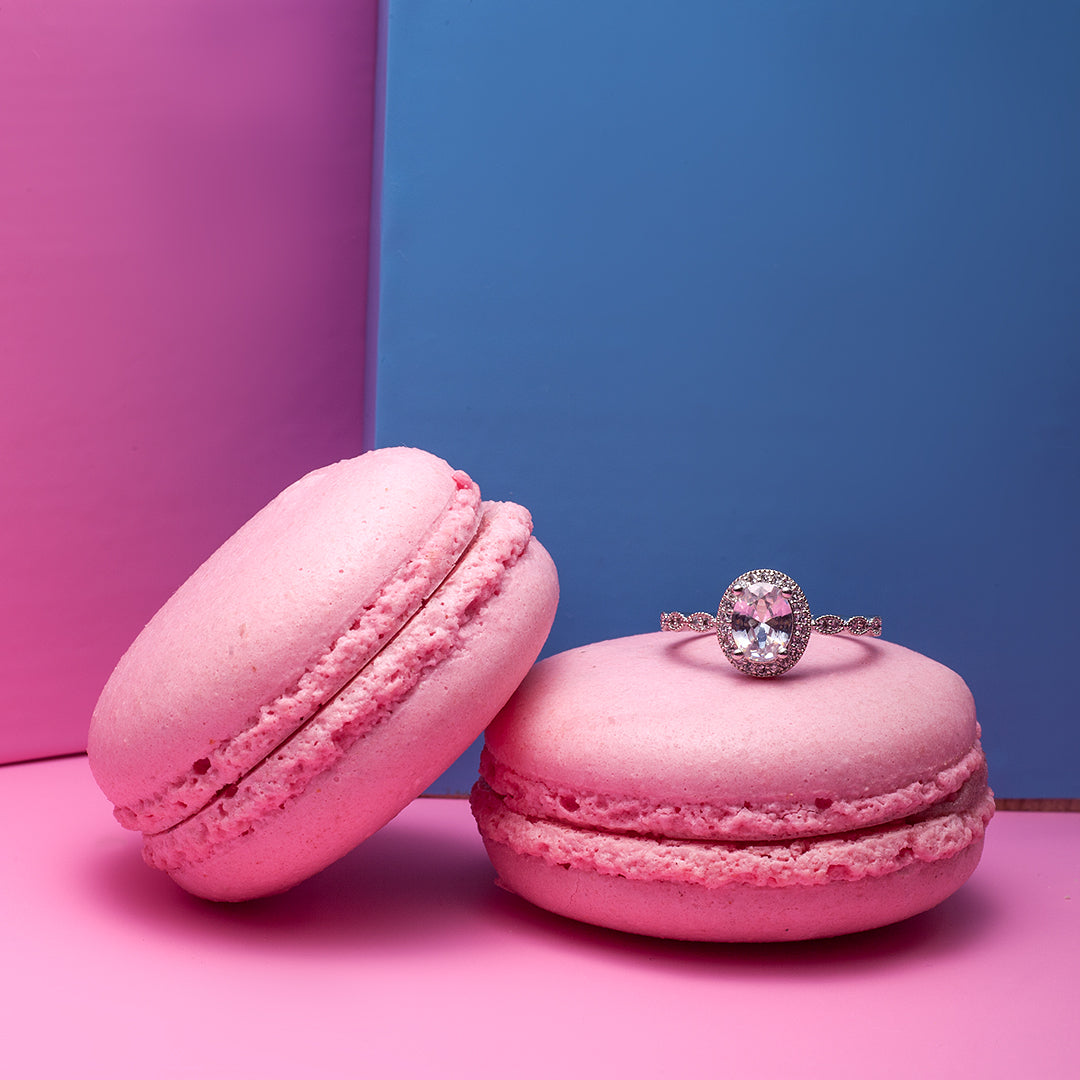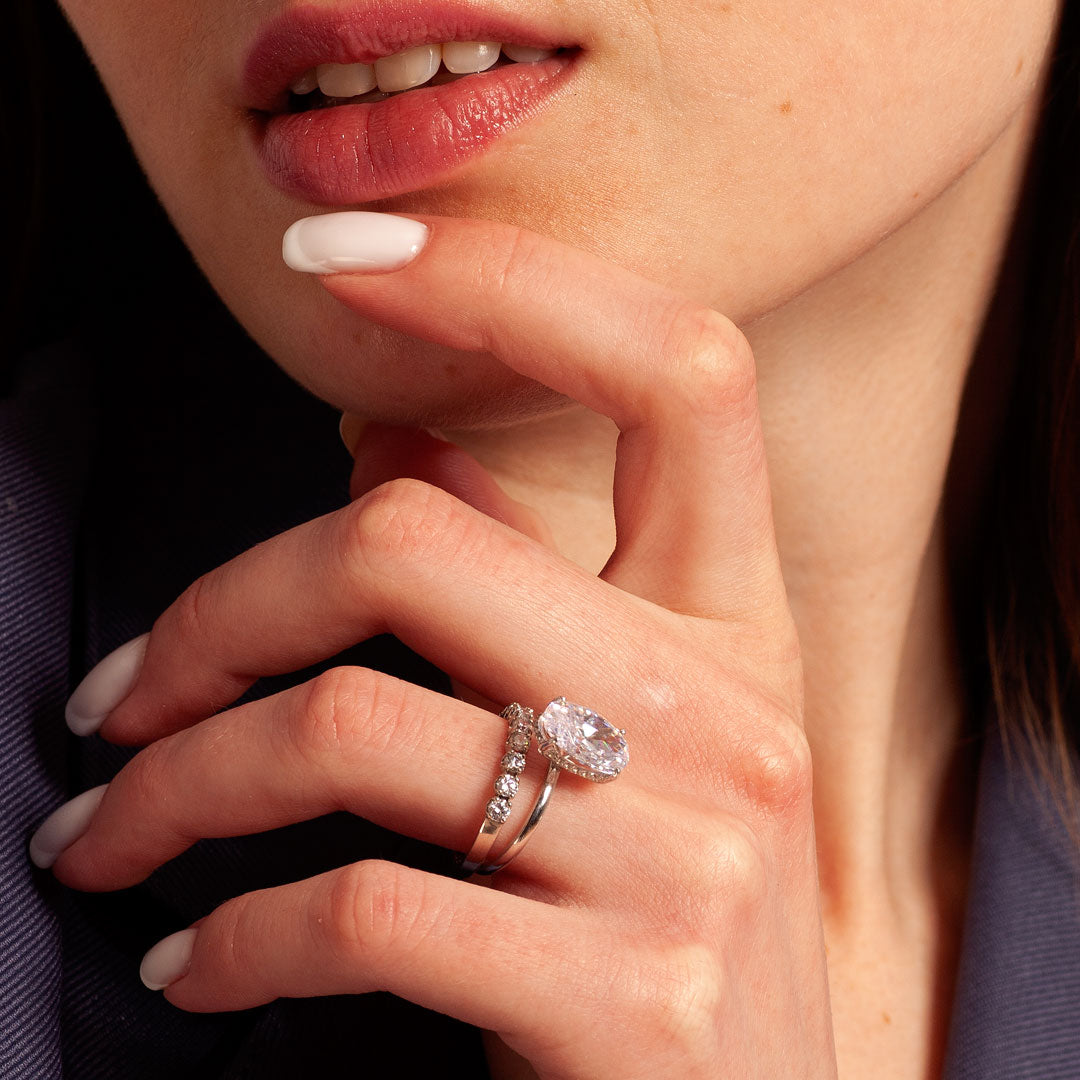Diamond carat weight
Diamond weight is currently measured in carats, namely 200 milligrams. The word "carat" refers to the unit of weight of natural and synthetic gemstones, corresponding to 1/5 of a gram. That is, 1 carat equals 0.2 grams. This value was established as the standard for weighing precious and semi-precious stones in 1907 by the Fourth General Conference on Weights and Measures in Paris. The name carat comes from the Cerátiοn carob tree. Its seeds have the unique feature that any seed weighs 0.2 grams, i.e. 1 carat. In 1913 the United States officially adopted "carat" as the unit of measurement for a gemstone, and in 1914 Great Britain and Europe followed their example. In the 1930s most of the diamond and gemstone industry converged on a standardized unit of measurement that is still in use today.

Size matters
Size plays an important role in the diamond's appearance. In addition to the carat weight, the diameter of the stone should be taken into account. A common misconception is that half a carat is half the size of one carat. Half a carat is half the weight of one carat, but the difference in millimeters for a brilliant-cut stone is only 1.35 mm. A stone with an average weight of 0.50 carats will have a diameter of 5.00 mm, while a stone with an average weight of 1.00 carats will have a diameter of 6.35 mm.

The diameter of a classic round brilliant cut diamond weighing 1 carat is approximately 6.3-6.5 mm. Carat weight by itself does not determine the value of a diamond. For example, two one-carat diamonds can be significantly different in price. The value of a stone is mostly determined not by its size, but by its clarity, color, and quality of cut. Given this, it is clear that large, flawless diamonds are rare.
It's also worth knowing that carat weight can have different values for different cuts, such as round, " princess", pear, oval, " cushion", "marquis", emerald, "radiant" or "heart". Diamond can have more carat weight without looking bigger, and two diamonds of the same carat weight can have different size if one is cut deeper than the other. In other words, it is important to note that carat weight does not necessarily indicate size.
Depending on the size, diamonds can be divided into several groups:
- Small, with a weight of 0.01 to 0.09 carats;
- Small stones weighing up to 0.29 carats;
- Medium-sized stones weighing from 0.3 to 0.99 carats;
- Large, or so-called "solitaires" weighing more than one carat;
- Auction gems, as they can only be bought at international auctions, over 3 to 6 carats.
Nowadays, it is possible to measure the weight of a diamond with an accuracy of 0.01 carat on a special carat scale. This can be done both in a jewelry workshop and in a jewelry factory.
But how to find out the carat weight of a diamond when it is already set into an engagement ring.
There is a special formula for carat weight (CW):
CW = D2 × H × 0.0061
Where D is the diameter of the diamond and H is its height. The uncertainty of this formula can be up to 10 percent.
This formula works for round-cut and oval-cut diamonds. For triangular, heart and baguette stones, the last value in the formula must be replaced by 0.057, 0.0059 and 0.00915, respectively.
The value of diamonds
Treated diamonds are valued according to the internationally recognized "Tavernier rule": the value of a gemstone is equal to the square of the mass (carat weight) of the crystal by the base price of one carat.
Therefore, to buy a 0.3-carat diamond is almost twice as expensive as a 0.29-carat stone, and a piece of jewelry with a 0.5-carat diamond will cost much more than a similar piece of jewelry with a 0.48-carat stone. A 2-carat diamond is 3 times more expensive than a 1-carat stone, and a 3-carat diamond is 10 times more expensive than a 1-carat stone. This "progression" increases up to 5 carats. A 10-carat diamond is valued at 100 times the price of a 1-carat diamond.











Leave a comment
This site is protected by hCaptcha and the hCaptcha Privacy Policy and Terms of Service apply.